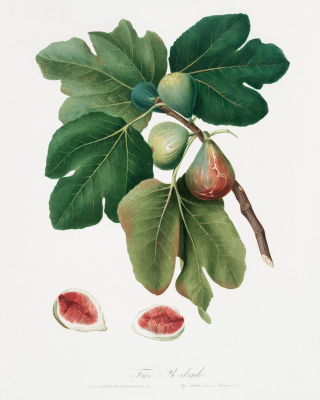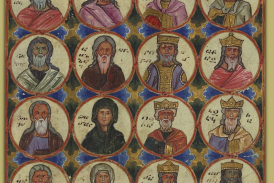Gospel in Art: A man had a fig tree planted in his vineyard

Wilfrid Blunt - Ch1. The Flower Artist in The Art of Botanical Illustration. Printed by Giorgio Gallesio, Pomona Italiana 1817-1839 © New York Public Library
Source: Christian Art
Gospel of 22 October 2022
Luke 13:1-9
Some people arrived and told Jesus about the Galileans whose blood Pilate had mingled with that of their sacrifices. At this he said to them, 'Do you suppose these Galileans who suffered like that were greater sinners than any other Galileans? They were not, I tell you. No; but unless you repent you will all perish as they did. Or those eighteen on whom the tower at Siloam fell and killed them? Do you suppose that they were more guilty than all the other people living in Jerusalem? They were not, I tell you. No; but unless you repent you will all perish as they did.'
He told this parable: 'A man had a fig tree planted in his vineyard, and he came looking for fruit on it but found none. He said to the man who looked after the vineyard, "Look here, for three years now I have been coming to look for fruit on this fig tree and finding none. Cut it down: why should it be taking up the ground?" "Sir," the man replied "leave it one more year and give me time to dig round it and manure it: it may bear fruit next year; if not, then you can cut it down."'
Reflection on the Botanical Print
There are about 850 varieties of Ficus, generally referred to as fig trees. One of the greatest sources of artworks relating to plants, including trees and flowers, is botanical art. Botanical illustrations aim at recording as accurately as possible the various species of plants. Typically, the illustration will try to convey all the crucial aspects of the plant, including the leaves, fruits, flowers, life cycle, etc that enables accurate identification. It frequently includes relevant dissections for species identification, as is the case here, where we see the branch, the leaves, the fruit closed and opened, etc… It is a beautiful art form celebrating nature and Creation. The earliest surviving illustrated botanical work is the Codex Vindobonensis, made in the year 512AD for Juliana Anicia, daughter of the former Western Roman Emperor Olybrius.
The greatest flower-artists have been those who have found beauty in truth; who have understood plants scientifically, but who have yet seen and described them with the eye and hand of the artist.
Today's Gospel reading, where Jesus shares the beautiful story about a fig tree that does not bear fruit, shows how patient and merciful God is towards us. He is always willing to give us more time, if he can see in our hearts that we need it… so that ultimately we can bear fruit. If God sees our willingness and efforts to change and grow closer to him, he will be patient and gently help us along the way, pushing us in the right direction…Common Fig (Ficus carica sativa),
LINKS
Gospel in Art: https://christian.art/
Today's reflection: https://christian.art/daily-gospel-reading/luke-13-1-9-2022-2/


















